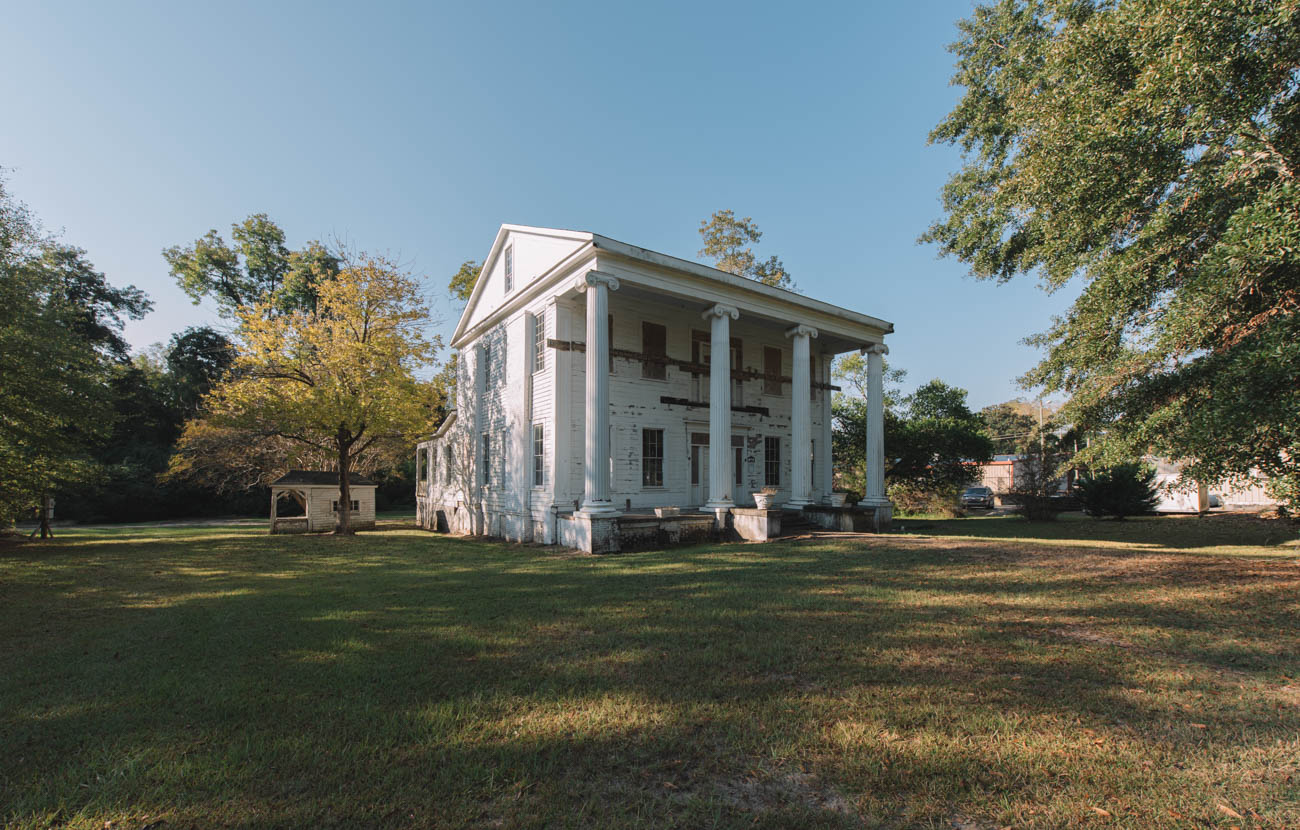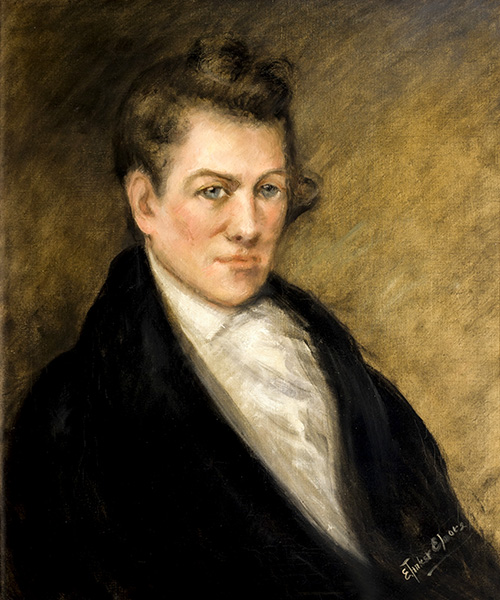| City/Town: • Greensboro |
| Location Class: • Residential |
| Built: • 1856 | Abandoned: • 2002 |
| Historic Designation: • National Register of Historic Places (1976) |
| Status: • Abandoned |
| Photojournalist: • David Bulit |
Table of Contents
Greenwood
Greenwood is an old plantation home built by U.S. congressman Sydenham Moore in 1856 located in Greensboro, Alabama. The home incorporated numerous decorative features and other elements from an earlier mansion, also called Greenwood, built three decades earlier by Alabama governor Israel Pickens. Some sources have stated that the house was moved from the prairies south of Greensboro to its present location, but those statements are undoubtedly false.
The home was known as the W. C. Pickens House when the Historic American Building Survey documented it in 1934. William Caragan Pickens was the clerk for St. Paul’s Episcopal Church in Greensboro and the nephew of Isreal Pickens. E. Walter Burkhardt, Alabama District Officer of the Historic American Buildings Survey, also noted an “E. G. Rothenberg” on the filed HABS index card. Officially, it is known as the Greenwood-Sydenham Moore Home and was listed on the National Register of Historic Places on August 13, 1976, as a contributing structure of the Greenwood Historic District.
Isreal Pickens, Governor of Alabama
Isreal Pickens was born on January 30, 1780, in Concord, North Carolina, the son of Jane Carrigan and Captain Samuel Pickens, a veteran of the American Revolution. After first attending a local academy, he studied law at Jefferson College in Washington, Pennsylvania. In 1802, Pickens moved to Burke County, North Carolina, to practice law and soon became involved in politics.
His election to the state senate in 1808 was a stepping stone to higher office; North Carolina voters sent Pickens to the U.S. House of Representatives in 1811, where he served until 1817. A loyal supporter of President James Madison, Pickens was one of Congress’ “War Hawks,” a group of southern and western politicians who pushed the nation toward military conflict with England in 1812.
in 1814, Pickens married Martha Orilla Lenoir, the daughter of one of the wealthiest men in North Carolina, General William Lenoir. The Pickens’ had four children together; Isreal Leonidas, William James, Andrew Lenoir, and Julia A. Pickens Howe.
A protégé of Andrew Jackson, Israel Pickens took Jackson’s advice and joined the “Great Migration” of Americans to the Deep South as cotton prices soared and new fertile lands opened in the Old Southwest after the War of 1812 through Indian land sessions. The emigration to Alabama reached epidemic proportions and was called “Alabama Fever.” Pickens moved to Alabama along with his brothers Samuel, John, and James in 1817, and took a job as a register of the United State Land Office for Washington County.
Using the leverage of his office, Pickens purchased almost 3,500 acres in southwest Alabama in less than a year and became the first president of the Tombigbee Bank of St. Stephens. In only five weeks in late 1819 and early 1820, his slaves cleared one hundred acres and continued to work. Within a few years, after his wife’s death, he established and operated a large plantation near Greensboro which he called “Greenwood.” His brothers followed and established their own plantations in Hale County known as “Umbria” and “Honeysuckle Glen.” The Pickens family purchased and developed several more plantations including “Canebrake” and “Goodrum.”
Pickens returned to politics in 1818 and was a delegate from St. Stephens to the state Constitutional Convention, and served on the committee that drafted the state constitution. Pickens worked for several progressive measures such as complete freedom of religion, and requirements for the humane treatment and welfare of slaves. Toward the close of the convention, Thomas Bibb and Israel Pickens tried but failed, to give the legislature power to grant citizenship, including voting rights, to free blacks. Pickens served two terms as governor of Alabama between 1821 and 1825, defeating Dr. Henry H. Chambers in both elections. Because of his political influence, Pickens hosted the sensational tour throughout the state by the great French hero of the American Revolution, General Marquis de Lafayette, accompanied by other highly respected individuals such as Thomas Merriwether Cowles.
Death
Dr. Henry H. Chambers served as the United States Senator from Alabama from 1825 to 1826 when he suddenly died en route to Washington D.C. Israel Pickens was appointed Senator to fill the vacancy left by the death of Chambers. Almost immediately after entering the Senate in 1827, he began to suffer from tuberculosis and went to Matanzas, Cuba hoping for the warm weather there would ease his sufferings. He died there in April and was later buried at Greenwood in the Pickens Family Cemetery. His remains were later moved to Greensboro Cemetery.
On his way to Cuba, Pickens stopped in Mobile and there made his last will and testament. It reads in part, “The undersigned Isreal Pickens, of Greene County, now on an excursion in hope of obtaining some relief from the alarming disease which has for many months deeply affected us, have thought it prudent to have some memoranda about the disposing of my estate and the concerns of my children.”
It continues, “My dear children, are the greatest objects that would render a longer life very desirable to me. My only daughter, Julia, I wish put to one of the most respectable schools in North Carolina as soon as possible, and continued till she has finished her education. Her aunt, Mira Lewis, I wish to act as some healthy situation at school and there prepared to have a full liberal course of education and afterwards to be supported in the prosecution of a profession. In all this I wish their course of studies to be thorough and complete.”
In his will, Pickens further specified that his plantations be kept as intact as possible. Although known as specifically mentioned, there is no doubt that Greenwood was what he meant. In 1852, Greenwood and the Pickens plantation was sold to Sydenham Moore.
Sydenham Denham Moore
Sydenham Denham Moore was born on May 25, 1817, in Rutherford County, Tennessee, the son of Dr. Alfred Moore who served in the Northwest Indian War as a surgeon. Moore had five siblings; Ella Moore Dunegan, John Edmund, Olivia Moore O’Neal, George H., and Elizabeth Jones Moore Phelan. His oldest sister married Edward Asbury O’Neal, a future brigadier general in the Confederate States Army and governor of Alabama. The Moore family moved to Limestone County, Alabama in 1818.
Moore pursued classical studies of ancient Greece and Rome and attended the University of Alabama in Tuscaloosa from 1833 to 1836. Like many upper-class southerners at the time, he also studied law. He was admitted to the bar and commenced practice in Greensboro, Alabama. His interest in the law eventually led him into the judiciary when he became a judge in Greene County in 1840. In 1841, he married Amanda Melvina Hobson, with whom he would have nine children. Moore served as a judge until 1846 and later from 1848 to 1850.
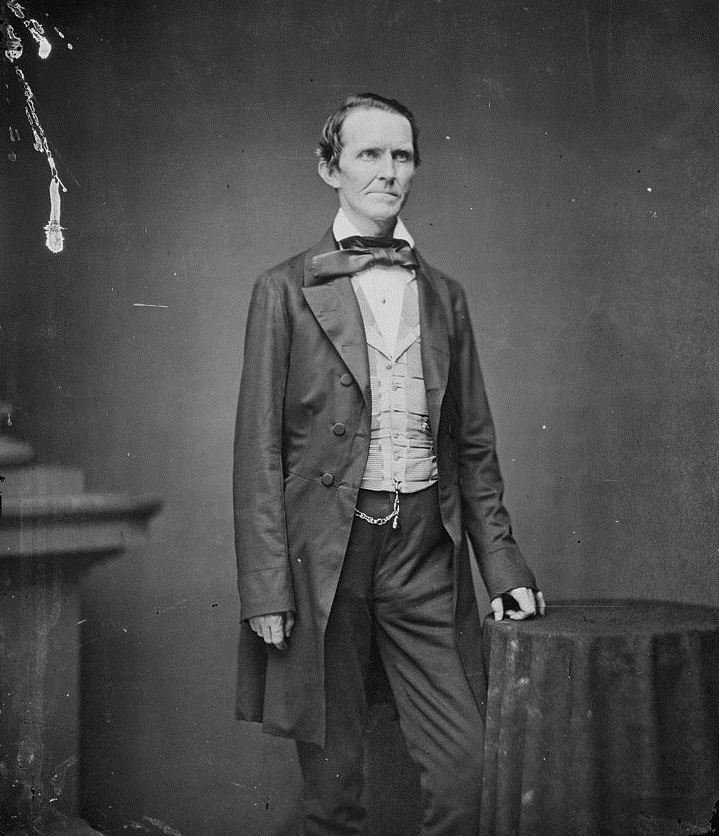
Mexican-American War
After the United States declared war on Mexico in 1846, Moore recruited volunteers from his law office in Eutaw to fight. His recruits made up a unit of soldiers that came to be known as the “Eutaw Rangers.” Future representative William Henry Forney also was a member of this unit. Moore’s volunteers boarded a steamboat at Finches Ferry Landing in Greene County and headed for Mobile, before embarking on another steamboat bound for Mexico.
The Eutaw Rangers met up with the First Regiment of Alabama Volunteers led by Colonel John Coffey and were stationed at Camp Belknap. While at the camp, the unit cared for sick and wounded soldiers, and many eventually succumbed to the disease themselves. Moore owned slaves, and an enslaved person simply known as Peter was one of the victims. Moore lamented his death in a letter to his wife. Peter and the other deceased members of Moore’s unit were buried in northern Mexico.
The Eutaw Rangers stayed at the camp without seeing much combat compared to other units. In March 1847, they were called upon to contribute to General Zachary Taylor’s 20-day siege of Veracruz. The city siege consisted of an amphibious assault and a cannonade bombardment led by Captain Robert E. Lee. The experience and action in the conflict earned him the promotion to brigadier general of the Alabama Militia.
Greenwood
After returning to Alabama, Moore resumed practicing law in Greensboro. In the early 1850s, he ran unsuccessfully on at least two occasions for the Fourth Congressional District seat that was held and won by William Russell Smith. The 1860 Census lists Moore as a planter as well as a lawyer.
In 1852, Moore purchased Greenwood from Andrew L. Pickens, and his wife, Caroline, for the sum of $9,012.50. Andrew was the son of Isreal Pickens and was involved in the buying and selling of real estate, so Greenwood fell into his hands. In this sale, a small tract of land was retained as a perpetual burial ground for the Pickens family.
Three years later, Moore bought a vacant lot on the edge of Greensboro from Robert B. Waller, and his wife, Sarah, for $500. Old records described this lot as being in “the McAlpine Grove near the town of Greensboro bounded as follows to wit;—on the north by the main road running from the town of Greensboro toward Erie, which said road separates it from the lot on which Augustus Benners resides; on the west by the street or ally which separates it from the lot on which Col. Isaac Croom resides; on the south by the street or ally which separates from the lot owned by Major Ruben Seay; and on the east by a street or ally which separates it from the lot on which Col. John G. Harvey resides.“
In 1856, Moore built a two-story Greek Revival home with four Ionic columns and two-bays windows on this lot. There has been much debate and controversy as to the origin of this old home. It has been said that this was the original Greenwood home of Isreal Pickens and was simply moved to Greensboro by Moore. While no way of proving it, it is highly doubtful that this is the original Greenwood as there are no other homes built in the area that even come close to the architecture of Moore’s home. The homes of the early 1920s were far simpler built on the frontier with the owner intending to replace them in later years. The original Greenwood was likely no different.
Moore undoubtedly did make use of the materials of the original home when it was razed in the 1850s. On the east chimney, a marble tablet could be found which reads, “S. M. Moore 1856.” It is hardly likely that Moore would have placed this tablet in the chimney had he not regarded himself as the builder of the home, and not merely the person who moved it.
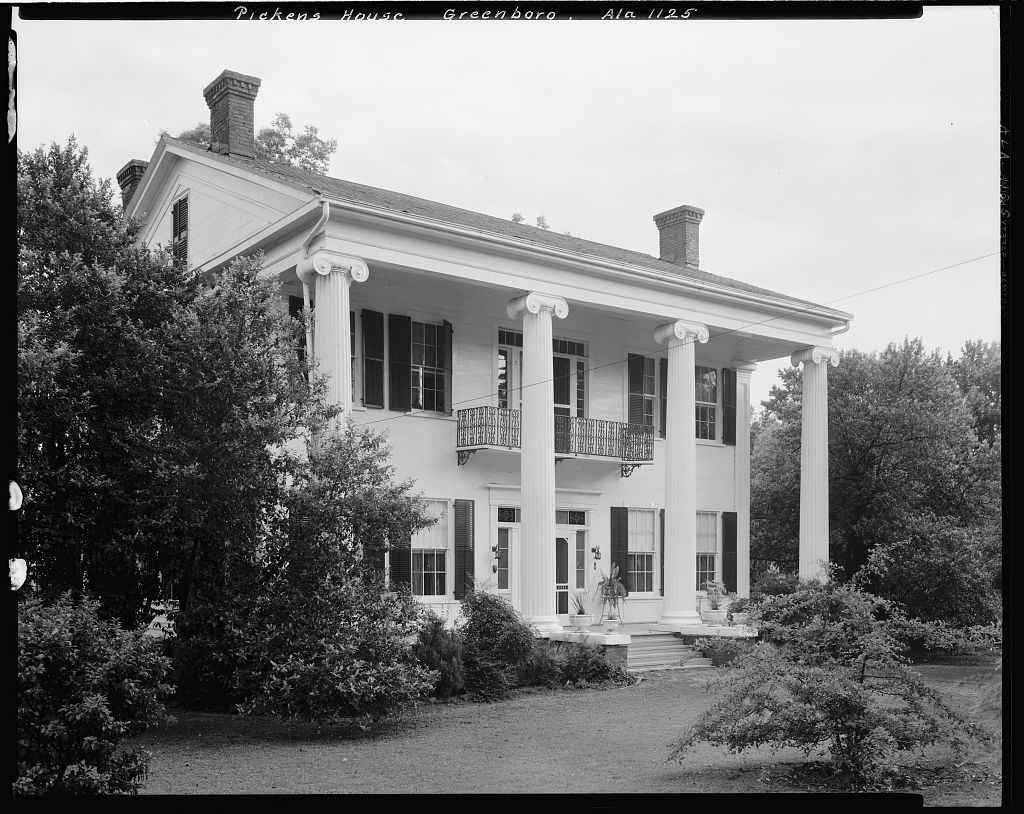
Civil War
In 1857, Moore represented Alabama’s Fourth Congressional District serving in the U.S. Congress until 1861. He left Congress after Alabama seceded from the Union and joined the Confederate States Army. His military experience earned him the rank of colonel in the Confederate Army during the Civil War.
He organized and led the Eleventh Alabama Regiment of volunteer infantry that was at first attached to General Edmund Kirby Smith’s brigade and stationed in Northern Virginia. The Eleventh fought in their first major action at the Battle of Seven Pines on May 31, 1862. Moore was wounded twice on that day and was among the 49 members of the unit who were wounded; nine were killed. He succumbed to his wounds at a field hospital near Richmond, Virginia. Moore’s loss was described as “scarcely reparable” by his commanding general. His body was returned to Alabama and buried in the Greensboro City Cemetery.
The Balcony Incident
One story told by descendants of the Moore family takes place on Greenwood’s balcony. During Reconstruction, there has been a great deal of talk about an uprising among the freedmen—and of course, no people were as frightened as the families left fatherless by the war. On this particular night soon after the surrender, the Moore family heard a noise on the front lawn. Mrs. Moore ventured out onto the balcony and saw many freedmen congregated in front of the house. With a show of bravery, Mrs. Moore demanded to know what they wanted.
A man spoke up from the crowd and said, “Miss Amanda, we is your folks from Arkansas (the Moore family also owned a plantation in that state.) We heard MIster Syd was killed in the war, and we didn’t know what to do. We’ve done walked all the way from Arkansas to find out what to do.” The servants living in the cabin behind the home were woken up and Mrs. Moore ordered that the fires be kindled. The thin larder was laid bare, and there started a night-long feast, an event that has not been forgotten by the family.
The Brown Family
Moore’s widow died in 1869. Greenwood was in possession of multiple families thereafter including Dr. John Randolph who owned it for a number of years and according to his obituary, died here in his home after a long illness. It was purchased by the Withers family before it passed to William Caragan Pickens, the nephew of Isreal Pickens, who used the home as a rental property.
Mr. and Mrs. Jack Brown moved to Greensboro from Newbern, Alabama, and acquired Greenwood in 1934. As reported by the Greensboro Watchman, the couple renovated the property and “made it one of the show spots of the Black Belt. The wide lawn, shaded on one side by a sprawling sweet olive, on the other by an immense white pine, is neatly trimmed; the flowers are a treat to the sorest eyes, and the interior gives you an idea of what the antebellum home must have been when the South was more affluent than it has been since the war, and there was an abundance of servants.
Greenwood faces to the north, and there is a pleasant veranda, with those four huge columns rising to the height of the structure. As with so many antebellum homes, you enter a spacious hallway, and on either side are huge rooms. The ceilings downstairs are 16 feet high. The floor throughout the house is of wide boards of heart pine, highly polished and rich with age. Originally, there was an old kitchen in the back, separate from the house, with a covered runway, but this has been abolished in favor of modern conveniences.
The stairway was hand-carved by slave labor, and on the upper floor are four splendid bedrooms. Throughout the house is beautifully furnished, largely with antique pieces, and an interesting this is the black marble fireplace in the living room. This marble came from the Nelson mansion when the fixtures were sold a number of years ago.“
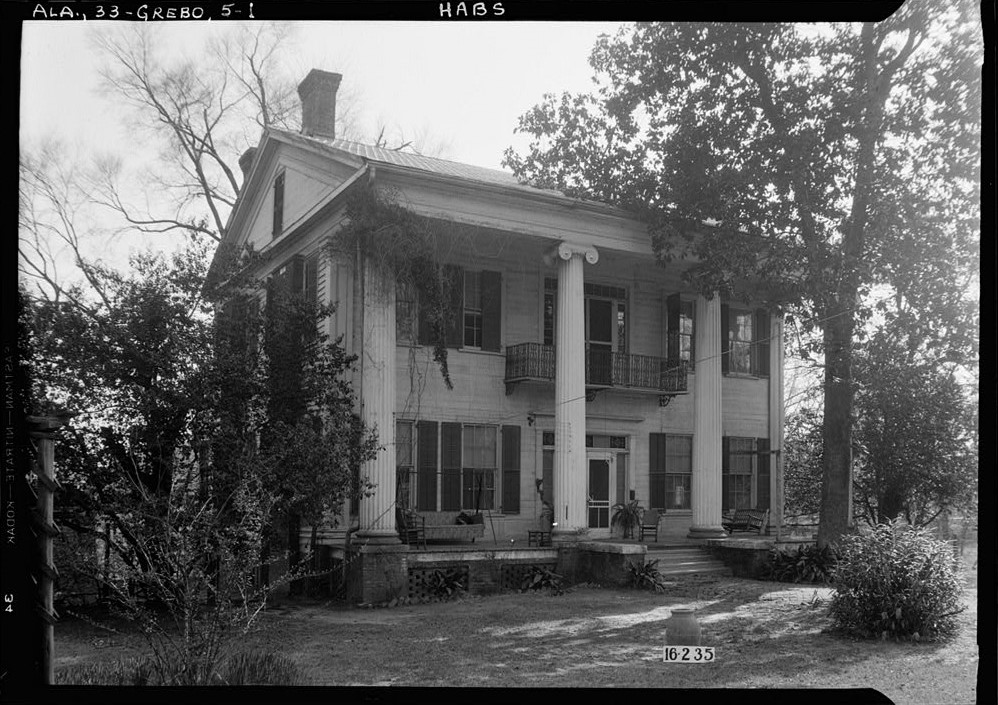
Attempts at Preserving Greenwood
In 1980, the Alabama Historical Commission placed an easement on the old Greenwood house which C. R. Lawson Jr., the owner of the home at the time, gave the state the authority to preserve the integrity of the design of the original exterior of the home. The easement requires that the owner “restore, keep and maintain in a good state of repair the footings, foundation, exterior walls, roof, exterior doors and windows, and to repair, reconstruct, and replace the same as they may be damaged or destroyed by casualty.”
The easement also required that the owner carry fire insurance for at least 70 percent of the home’s value. The caveat is that if the home is damaged beyond 50 percent by any cause, “except the willful act of grantors,” the restrictions are not enforceable. The facade easement results in a lower value of the home but the devaluation is somewhat eased by a tax break.
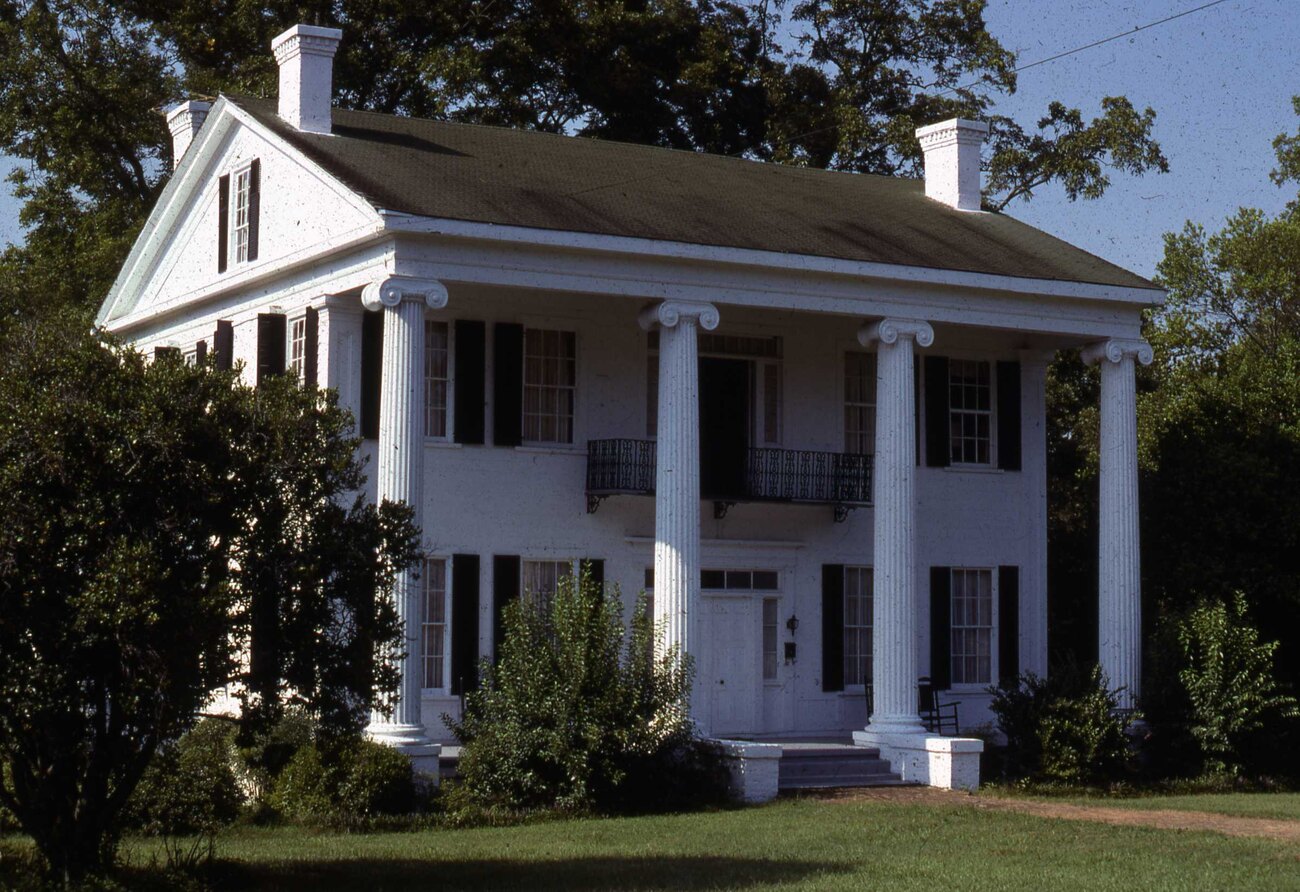
Fire
According to the Hale County tax accessor, a deed on the property was recorded in Tom Meymand’s name in February 2000. In March 2002, Greenwood was severely damaged by a fire caused by defective wiring in the back of the home. The home sat exposed to the weather for months awaiting repairs. By December 2002, the Alabama Historical Commission was trying to get the owner to repair the structure, however, the owner wanted to demolish it.
The easement put in place years earlier gave the Historical Commission the right to demand Meymand replace the roof and protect the interior exposed to rain and weather since the fire. Meymand in a telephone interview with the Gadsen Times said the home is damaged beyond repair, which relieves him of the legal responsibility to fix it. He indicated it would take hundreds of thousands of dollars to restore the facade. Meymand received an insurance payout and decided he did not want to fix the home.
Status and Future of Greenwood
Alabama Historical Commission executive director Lee Warner estimated that Meymand received an insurance payout between $500,000 and $700,000, more than enough to repair the home. Meymand said that was not true but added that the insurance company wouldn’t allow him to reveal the settlement. Today, the property remains partially boarded and vacant. There are currently no plans for Greenwood.
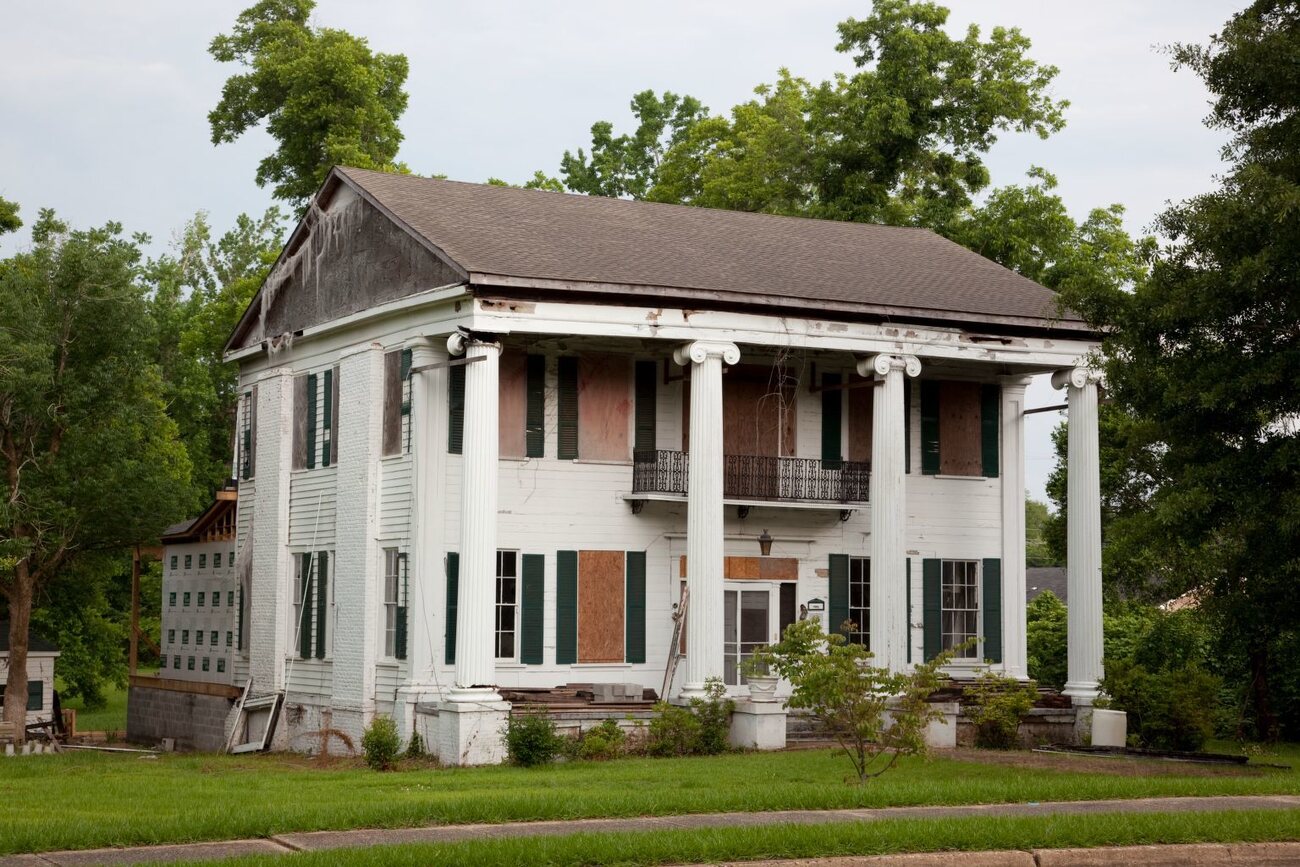
Photo Gallery
References
National Register of Historic Places. (August 13, 1976). Greensboro Historic District
Gadsden Times. (December 15, 2002). Commission continues efforts to save historic, burned home
The University of South Alabama. (retrieved December 16, 2022). The Pickens Family Papers
Tuscaloosanews.com (December 15, 2002). Historic house at center of struggle

